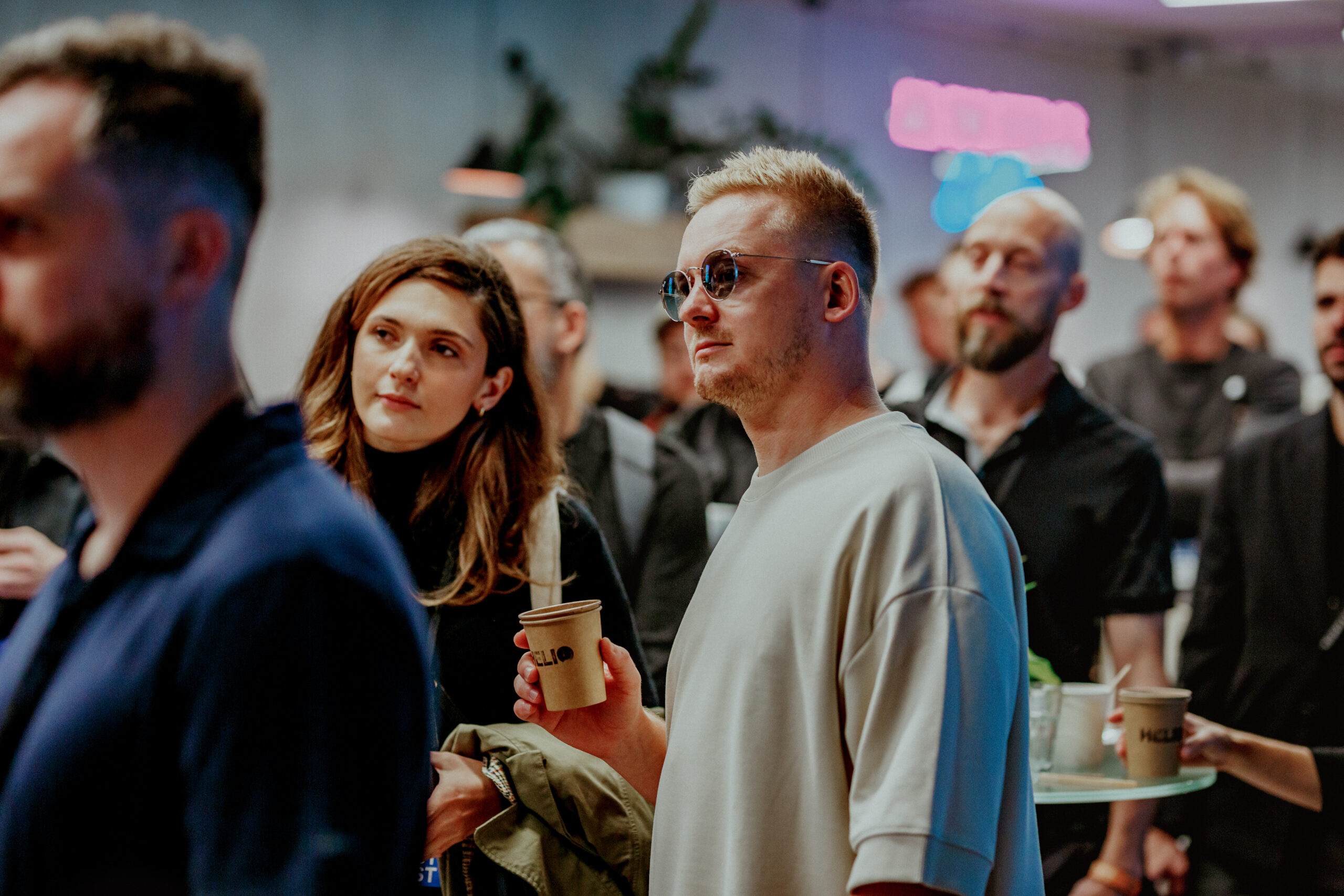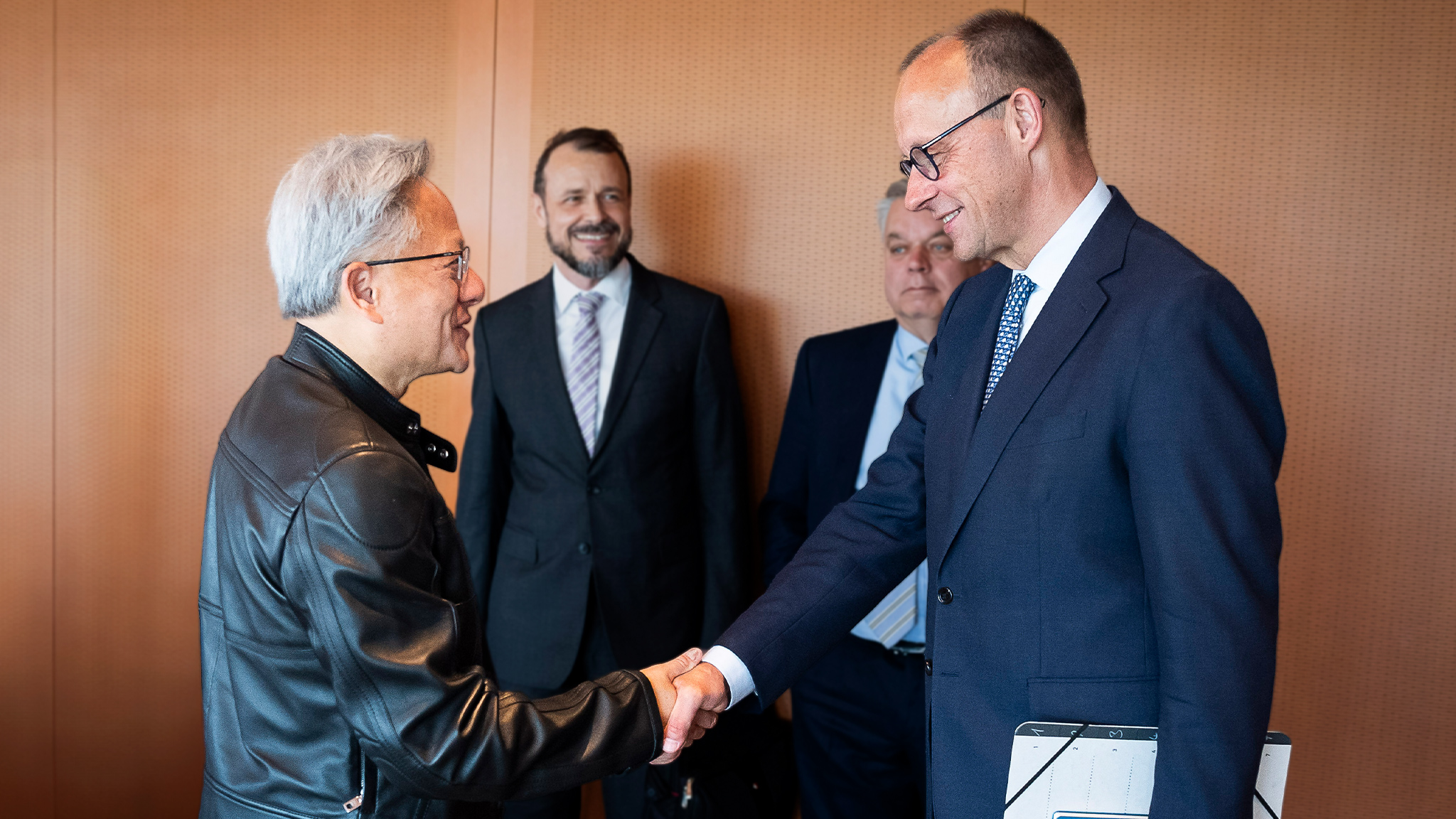Building an Architectural Visualization Community: The Case for Physical Gatherings
Barbara Betlejewska is a PR consultant and manager with extensive experience in architecture and real estate, currently involved with World Visualization Festival, a global event bringing together CGI and digital storytelling professionals for 3 days of presentations, workshops, and networking in Warsaw, Poland, this October.
Over the last twenty years, visualization and 3D rendering have evolved from supporting tools to become central pillars of architectural storytelling, design development, and marketing across various industries. As digital technologies have advanced, the landscape of creative work has changed dramatically. Artists can now collaborate with clients worldwide without leaving their homes, and their careers can flourish without ever setting foot in a traditional studio.
In this hyper-connected world, where access to knowledge, clients, and inspiration is just a click away, do we still need to gather in person? Do conferences, festivals and meetups in the CGI and architectural visualization world still carry weight?
The People Behind the Pixels
Professionals from the visualization industry exchanging ideas at WVF 2024.
For a growing number of professionals — especially those in creative and tech-driven fields — remote work has become the norm. The shift to digital workflows, accelerated by the pandemic, has brought freedom and flexibility that many are reluctant to give up. It’s easier than ever to work for clients in distant cities or countries, to build a freelance career from a laptop, or to pursue the lifestyle of a digital nomad.
On the surface, it is a broadening of horizons. But for many, the freedom of remote work comes with a cost: isolation. For visualization artists, the reality often means spending long hours alone, rarely interacting face-to-face with peers or collaborators. And while there are undeniable advantages to independent work, the lack of human connection can lead to creative stagnation, professional burnout, and a sense of detachment from the industry as a whole.
Despite being a highly technical and often solitary craft, visualization and CGI thrive on the exchange of ideas, feedback and inspiration. The tools and techniques evolve rapidly, and staying relevant usually means learning not just from tutorials but from honest conversations with others who understand the nuances of the field.
A Community in the Making
Professionals from the visualization industry exchanging ideas at WVF 2024.
That need for connection is what pushed Michał Nowak, a Polish visualizer and founder of Nowak Studio, to organize Poland’s first-ever architectural visualization meetup in 2017. With no background in event planning, he wasn’t sure where to begin, but he knew something was missing. The Polish Arch Viz scene lacked a shared space for meetings, discussions, and idea exchange. Michał wanted more than screen time; he wanted honest conversations, spontaneous collaboration and a chance to grow alongside others in the field.
What began as a modest gathering quickly grew into something much bigger. That original meetup evolved into what is now the World Visualization Festival, an international event that welcomes artists from across Europe and beyond.
“I didn’t expect our small gathering to grow into a global festival,” Michał says. “But I knew I wanted a connection. I believed that through sharing ideas and experiences, we could all grow professionally, creatively, and personally. And that we’d enjoy the journey more.”
The response was overwhelming. Each year, more artists from across Poland and Europe join the event in Wrocław, located in south-western Poland. Michał also traveled to other festivals in countries like Portugal and Austria, where he observed the same thing: a spirit of openness, generosity, and shared curiosity. No matter the country or the maturity of the market, the needs were the same — people wanted to connect, learn and grow.
And beyond the professional side, there was something else: joy. These events were simply fun. They were energizing. They gave people a reason to step away from their desks and remember why they love what they do.
The Professional Benefits
Hands-on learning at the AI-driven visualization workshop in Warsaw, October 2024.
The professional benefits of attending industry events are well documented. These gatherings provide access to mentorship, collaboration and knowledge that can be challenging to find online. Festivals and industry meetups serve as platforms for emerging trends, new tools and fresh workflows — often before they hit the mainstream. They’re places where ideas collide, assumptions are challenged and growth happens.
The range of topics covered at such events is broad, encompassing everything from portfolio reviews and in-depth discussions of particular rendering engines to discussions about pricing your work and building a sustainable business. At the 2024 edition of the World Visualization Festival, panels focused on scaling creative businesses and navigating industry rates drew some of the biggest crowds, proving that artists are hungry for both artistic and entrepreneurial insights.
Being part of a creative community also shapes professional identity. It’s not just about finding clients — it’s about finding your place. In a field as fast-moving and competitive as Arch Viz, connection and conversation aren’t luxuries. They’re tools for survival.
There’s also the matter of building your social capital. Online interactions can only go so far. Meeting someone in person builds relationships that stick. The coffee-break conversations, the spontaneous feedback — these are the moments that cement a community and have the power to spark future projects or long-lasting partnerships. This usually doesn’t happen in Zoom calls.
And let’s not forget the symbolic power of events like industry awards, such as the Architizer’s Vision Awards or CGArchitect’s 3D Awards. These aren’t just celebrations of talent; they’re affirmations of the craft itself. They contribute to the growth and cohesion of the industry while helping to establish and promote best practices. These events clearly define the role and significance of CGI and visualization as a distinct profession, positioned at the intersection of architecture, marketing, and sales. They advocate for the field to be recognized on its own terms, not merely as a support service, but as an independent discipline. For its creators, they bring visibility, credit, and recognition — elements that inspire growth and fuel motivation to keep pushing the craft forward. Occasions like these remind us that what we do has actual value, impact and meaning.
The Energy We Take Home
The WVF 2024 afterparty provided a vibrant space for networking and celebration in Warsaw.
Many artists describe the post-event glow: a renewed sense of purpose, a fresh jolt of energy, an eagerness to get back to work. Sometimes, new projects emerge, new clients appear, or long-dormant ideas finally gain momentum. These events aren’t just about learning — they’re about recharging.
One of the most potent moments of last year’s WVF was a series of talks focused on mental health and creative well-being. Co-organized by Michał Nowak and the Polish Arch Viz studio ELEMENT, the festival addressed the emotional realities of the profession, including burnout, self-doubt, and the pressure to constantly produce. These conversations resonated deeply because they were real.
Seeing that others face the same struggles — and come through them — is profoundly reassuring. Listening to someone share a business strategy that worked, or a failure they learned from, turns competition into camaraderie. Vulnerability becomes strength. Shared experiences become the foundation of resilience.
Make a Statement. Show up!
Top industry leaders shared insights during presentations at WVF 2024
In an era when nearly everything can be done online, showing up in person is a powerful statement. It says: I want more than just efficiency. I want connection, creativity and conversation.
As the CGI and visualization industries continue to evolve, the need for human connection hasn’t disappeared — it’s grown stronger. Conferences, festivals and meetups, such as World Viz Fest, remain vital spaces for knowledge sharing, innovation and community building. They give us a chance to reset, reconnect and remember that we are part of something bigger than our screens.
So, yes, despite the tools, the bandwidth, and the ever-faster workflows, we still need to meet in person. Not out of nostalgia, but out of necessity. Because, no matter how far technology takes us, creativity remains a human endeavor.
Architizer’s Vision Awards are back! The global awards program honors the world’s best architectural concepts, ideas and imagery. Start your entry ahead of the Final Entry Deadline on July 11th.
The post Building an Architectural Visualization Community: The Case for Physical Gatherings appeared first on Journal.
#building #architectural #visualization #community #case
Building an Architectural Visualization Community: The Case for Physical Gatherings
Barbara Betlejewska is a PR consultant and manager with extensive experience in architecture and real estate, currently involved with World Visualization Festival, a global event bringing together CGI and digital storytelling professionals for 3 days of presentations, workshops, and networking in Warsaw, Poland, this October.
Over the last twenty years, visualization and 3D rendering have evolved from supporting tools to become central pillars of architectural storytelling, design development, and marketing across various industries. As digital technologies have advanced, the landscape of creative work has changed dramatically. Artists can now collaborate with clients worldwide without leaving their homes, and their careers can flourish without ever setting foot in a traditional studio.
In this hyper-connected world, where access to knowledge, clients, and inspiration is just a click away, do we still need to gather in person? Do conferences, festivals and meetups in the CGI and architectural visualization world still carry weight?
The People Behind the Pixels
Professionals from the visualization industry exchanging ideas at WVF 2024.
For a growing number of professionals — especially those in creative and tech-driven fields — remote work has become the norm. The shift to digital workflows, accelerated by the pandemic, has brought freedom and flexibility that many are reluctant to give up. It’s easier than ever to work for clients in distant cities or countries, to build a freelance career from a laptop, or to pursue the lifestyle of a digital nomad.
On the surface, it is a broadening of horizons. But for many, the freedom of remote work comes with a cost: isolation. For visualization artists, the reality often means spending long hours alone, rarely interacting face-to-face with peers or collaborators. And while there are undeniable advantages to independent work, the lack of human connection can lead to creative stagnation, professional burnout, and a sense of detachment from the industry as a whole.
Despite being a highly technical and often solitary craft, visualization and CGI thrive on the exchange of ideas, feedback and inspiration. The tools and techniques evolve rapidly, and staying relevant usually means learning not just from tutorials but from honest conversations with others who understand the nuances of the field.
A Community in the Making
Professionals from the visualization industry exchanging ideas at WVF 2024.
That need for connection is what pushed Michał Nowak, a Polish visualizer and founder of Nowak Studio, to organize Poland’s first-ever architectural visualization meetup in 2017. With no background in event planning, he wasn’t sure where to begin, but he knew something was missing. The Polish Arch Viz scene lacked a shared space for meetings, discussions, and idea exchange. Michał wanted more than screen time; he wanted honest conversations, spontaneous collaboration and a chance to grow alongside others in the field.
What began as a modest gathering quickly grew into something much bigger. That original meetup evolved into what is now the World Visualization Festival, an international event that welcomes artists from across Europe and beyond.
“I didn’t expect our small gathering to grow into a global festival,” Michał says. “But I knew I wanted a connection. I believed that through sharing ideas and experiences, we could all grow professionally, creatively, and personally. And that we’d enjoy the journey more.”
The response was overwhelming. Each year, more artists from across Poland and Europe join the event in Wrocław, located in south-western Poland. Michał also traveled to other festivals in countries like Portugal and Austria, where he observed the same thing: a spirit of openness, generosity, and shared curiosity. No matter the country or the maturity of the market, the needs were the same — people wanted to connect, learn and grow.
And beyond the professional side, there was something else: joy. These events were simply fun. They were energizing. They gave people a reason to step away from their desks and remember why they love what they do.
The Professional Benefits
Hands-on learning at the AI-driven visualization workshop in Warsaw, October 2024.
The professional benefits of attending industry events are well documented. These gatherings provide access to mentorship, collaboration and knowledge that can be challenging to find online. Festivals and industry meetups serve as platforms for emerging trends, new tools and fresh workflows — often before they hit the mainstream. They’re places where ideas collide, assumptions are challenged and growth happens.
The range of topics covered at such events is broad, encompassing everything from portfolio reviews and in-depth discussions of particular rendering engines to discussions about pricing your work and building a sustainable business. At the 2024 edition of the World Visualization Festival, panels focused on scaling creative businesses and navigating industry rates drew some of the biggest crowds, proving that artists are hungry for both artistic and entrepreneurial insights.
Being part of a creative community also shapes professional identity. It’s not just about finding clients — it’s about finding your place. In a field as fast-moving and competitive as Arch Viz, connection and conversation aren’t luxuries. They’re tools for survival.
There’s also the matter of building your social capital. Online interactions can only go so far. Meeting someone in person builds relationships that stick. The coffee-break conversations, the spontaneous feedback — these are the moments that cement a community and have the power to spark future projects or long-lasting partnerships. This usually doesn’t happen in Zoom calls.
And let’s not forget the symbolic power of events like industry awards, such as the Architizer’s Vision Awards or CGArchitect’s 3D Awards. These aren’t just celebrations of talent; they’re affirmations of the craft itself. They contribute to the growth and cohesion of the industry while helping to establish and promote best practices. These events clearly define the role and significance of CGI and visualization as a distinct profession, positioned at the intersection of architecture, marketing, and sales. They advocate for the field to be recognized on its own terms, not merely as a support service, but as an independent discipline. For its creators, they bring visibility, credit, and recognition — elements that inspire growth and fuel motivation to keep pushing the craft forward. Occasions like these remind us that what we do has actual value, impact and meaning.
The Energy We Take Home
The WVF 2024 afterparty provided a vibrant space for networking and celebration in Warsaw.
Many artists describe the post-event glow: a renewed sense of purpose, a fresh jolt of energy, an eagerness to get back to work. Sometimes, new projects emerge, new clients appear, or long-dormant ideas finally gain momentum. These events aren’t just about learning — they’re about recharging.
One of the most potent moments of last year’s WVF was a series of talks focused on mental health and creative well-being. Co-organized by Michał Nowak and the Polish Arch Viz studio ELEMENT, the festival addressed the emotional realities of the profession, including burnout, self-doubt, and the pressure to constantly produce. These conversations resonated deeply because they were real.
Seeing that others face the same struggles — and come through them — is profoundly reassuring. Listening to someone share a business strategy that worked, or a failure they learned from, turns competition into camaraderie. Vulnerability becomes strength. Shared experiences become the foundation of resilience.
Make a Statement. Show up!
Top industry leaders shared insights during presentations at WVF 2024
In an era when nearly everything can be done online, showing up in person is a powerful statement. It says: I want more than just efficiency. I want connection, creativity and conversation.
As the CGI and visualization industries continue to evolve, the need for human connection hasn’t disappeared — it’s grown stronger. Conferences, festivals and meetups, such as World Viz Fest, remain vital spaces for knowledge sharing, innovation and community building. They give us a chance to reset, reconnect and remember that we are part of something bigger than our screens.
So, yes, despite the tools, the bandwidth, and the ever-faster workflows, we still need to meet in person. Not out of nostalgia, but out of necessity. Because, no matter how far technology takes us, creativity remains a human endeavor.
Architizer’s Vision Awards are back! The global awards program honors the world’s best architectural concepts, ideas and imagery. Start your entry ahead of the Final Entry Deadline on July 11th.
The post Building an Architectural Visualization Community: The Case for Physical Gatherings appeared first on Journal.
#building #architectural #visualization #community #case














